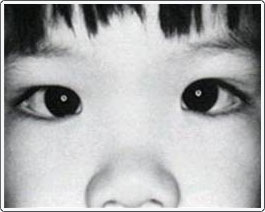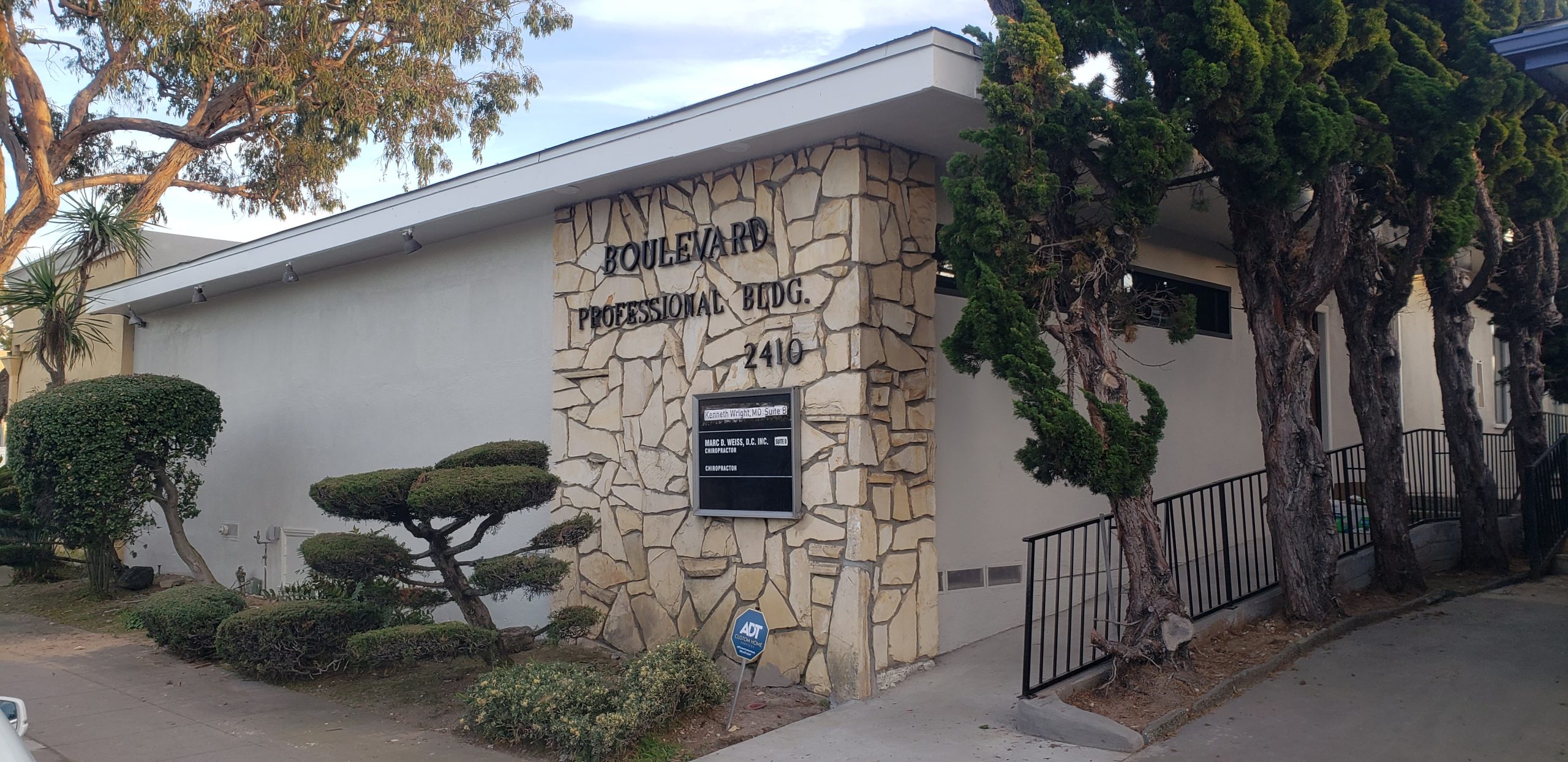
Note the light reflexes in the center of the pupils. They are centered and equal. However, the eyes look like they are crossing because of the very wide nasal bridge.
It is important to document proper eye alignment by using a light shined in both eyes at the same time to show where the reflex lies on the eyes (Hirschberg corneal light reflex test). In straight eyes, the light will hit the same spot in both eyes. Sometimes, however, it can be difficult to convince parents or caregivers that the eyes are truly straight, so the light test is often done while the parents look on.
Follow-up is important in patients diagnosed with pseudo-strabismus, as a small percentage of these patients will develop a true esotropia.

